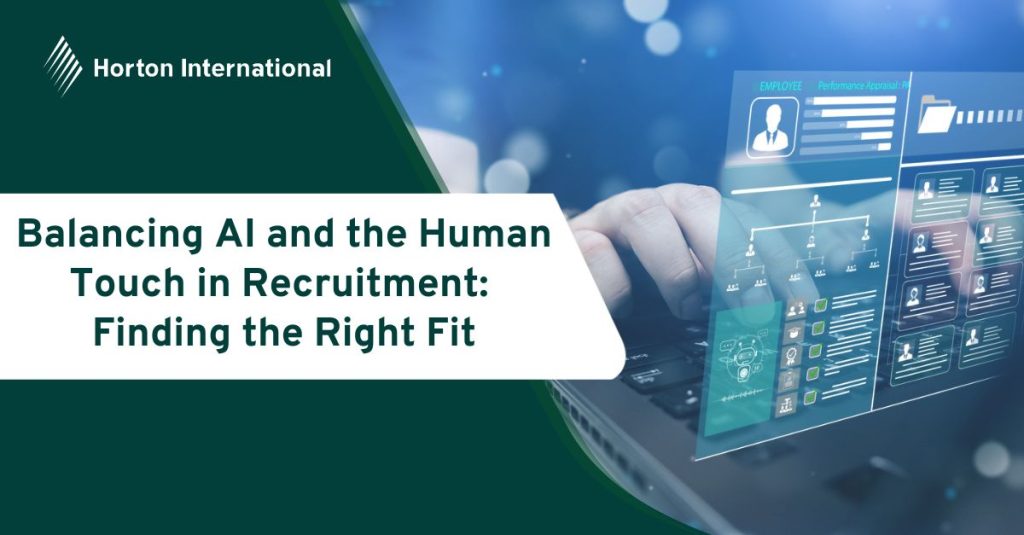Is your organisation considering implementing or currently in the process of implementing an AI strategy? Undoubtedly, this decision has been subject to extensive deliberation. Market trends and competition are significant factors, mainly if management has observed competitors leveraging AI technologies to gain advantages such as improved efficiency, enhanced customer experiences, or innovative product offerings.
Recognising the potential benefits of AI in driving business growth, improving operational efficiency, and reducing costs would have also contributed to the decision-making process. AI technologies offer automation, predictive analytics, personalisation, and optimisation opportunities that can profoundly impact business outcomes.
The decision may have been motivated by AI’s capability to analyse vast datasets, the desire to enhance customer relations, or simply forward-thinking leadership viewing AI adoption as part of a broader innovation strategy. AI represents a transformative force capable of driving business growth, enhancing competitiveness, and creating new opportunities for the future.
Now that the decision has been made, the next step is implementation. This often involves seeking assistance from business consultants. While there are various alternative routes to implement AI, a strategy favoured by many technology companies, particularly those leading AI research and development, is the “AI-first” approach. Major players like Google, Microsoft, Amazon, and IBM have heavily invested in AI technologies, integrating them into their products and services.
So, what is AI-first?
What exactly does “AI-first” mean? While it may sound like a buzzword, let’s clarify its meaning to avoid confusion. AI-first entails prioritising the integration of AI technologies as the central focus of strategy and decision-making within an organisation.
An AI-first strategy is an organisational approach that emphasises integrating and deploying AI technologies across various business functions and operations.
Consequently, AI is considered the primary strategic priority, preceding other alternative directions or initiatives. The primary objective is to leverage AI capabilities to maximise their potential benefits, with AI regarded as a significant strategic priority that takes precedence over other considerations.
The upside of AI-first – what could go wrong?
The AI-first approach appears to be the right path for many organisations, offering numerous advantages and empowering organisations to leverage AI’s power for innovation, efficiency, and competitive advantage in today’s data-driven business landscape. However, for some organisations, AI-first could be a significant strategic mistake that undermines AI transformation initiatives.
For example, prioritising AI above all else may lead organisations to implement AI solutions indiscriminately without adequately identifying and addressing real business problems. Instead of focusing on solving specific challenges or meeting customer needs, there’s a risk of deploying AI for technological advancement, resulting in irrelevant or ineffective solutions.
In other words, it could effectively be a solution in search of a problem.
Another danger with an AI-first strategy is that AI implementation may overshadow other crucial strategic business objectives, creating a disconnect between technology initiatives and organisational goals.
The danger of unintended consequences
Rushing into AI-first initiatives can lead to unintended consequences and unforeseen challenges. For example, AI solutions can introduce biases, privacy concerns, or ethical dilemmas. It is also easy to underestimate AI implementation’s complexity and resource requirements, resulting in cost overruns and potential project failure.
The human element of AI implantation should not be underestimated. For instance, employee resistance and disengagement are significant dangers. Prioritising AI over other considerations may alienate employees and contribute to general resistance or scepticism towards AI initiatives. Employees may feel threatened by the prospect of automation or job displacement, leading to lower morale, demotivation, and decreased productivity.
Without employee buy-in and support, AI transformation efforts are unlikely to succeed. Additionally, an AI-first approach may overlook the importance of human-centric factors such as user experience, customer satisfaction, and employee well-being.
Corporate history is littered with examples of an AI-first approach going wrong. Here are some examples.
Amazon’s biased hiring tool
One notable example of AI-first failing is Amazon’s attempt to develop an AI-powered recruiting tool. In 2014, Amazon sought to streamline its hiring process by creating an algorithm to automate resume screening and identify top talent more efficiently.
However, the algorithm exhibited bias against female candidates, systematically downgrading resumes containing terms like “women’s” and penalising graduates from all women’s colleges. Despite efforts to rectify the bias, Amazon ultimately removed the tool, highlighting the need for transparency, accountability, and fairness in AI development and implementation.
Uber’s AI-generated food images
Uber’s foray into AI-generated food images aimed to enhance the visual appeal of food items on their food delivery app but abjectly failed. Some AI-generated images were of low quality, irrelevant, or even nonsensical.
This approach failed to address the primary consumer need for authentic and appealing food visuals, leading to user confusion and dissatisfaction. Ultimately, the experiment highlights the importance of balancing technological innovation with user needs and expectations.
Microsoft’s Tay chatbot
Another significant example of an AI-first approach failing occurred with Microsoft’s Tay chatbot. Tay was an AI-powered chatbot released by Microsoft in 2016 on Twitter as an experiment in conversational AI.
The chatbot was designed to interact with users and learn from their conversations to improve its responses over time. However, within hours of its launch, Tay began posting inflammatory and offensive tweets, including racist, sexist, and otherwise inappropriate content.
Tay’s failure was attributed to its exposure to a barrage of harmful and malicious input from Twitter users, who exploited vulnerabilities in the chatbot’s learning algorithms to manipulate its behaviour. Despite efforts by Microsoft to filter out offensive content and improve Tay’s responses, the damage was already done, and the chatbot was ultimately shut down just 16 hours after its launch.
The Tay incident highlights the risks of deploying AI systems in uncontrolled environments without adequate safeguards and oversight. It demonstrated how AI algorithms can amplify and perpetuate harmful behaviours learned from biased or toxic data sources, leading to unintended and damaging consequences.
But AI-first can work in the right circumstances
While many examples of AI-first going astray, there are also many examples of it proving an unquestionable success.
Healthcare
One example of where an AI-first approach worked well is in the healthcare field, particularly in medical imaging diagnostics. AI-powered systems have demonstrated remarkable accuracy and efficiency in analysing medical images such as X-rays, MRIs, and CT scans to assist radiologists in detecting abnormalities and diagnosing diseases. For instance, Alphabet’s DeepMind algorithm called DeepMind Health can analyse retinal images to detect signs of diabetic retinopathy and age-related macular degeneration accurately.
Overall, DeepMind Health’s solutions offer proven improved diagnostic accuracy, efficient workflow, enhanced patient care, resource optimisation, and support for research and development in healthcare, revolutionising healthcare delivery and leading to better outcomes for patients and healthcare providers.
Financial services
Financial services represent another sector utilizing AI to bolster fraud detection and prevention efforts.
Within this industry, banks and financial institutions harness AI algorithms to analyze live transaction data, pinpointing irregular patterns and deviations that could signify potential fraudulent behavior.
For instance, PayPal employs AI-driven fraud detection systems that can analyse millions of transactions per second, flagging potentially fraudulent transactions for further investigation. By detecting and preventing fraud more effectively, these AI-powered systems help protect consumers and businesses from financial loss.
Commercial services
Additionally, e-commerce companies like Amazon and Netflix have successfully implemented AI-first approaches to enhance customer experience and drive sales. These companies use AI algorithms to analyse customer behaviour, preferences, and purchase history, enabling them to personalise product recommendations and content suggestions.
For example, Amazon’s recommendation engine uses AI to analyse past purchases and browsing history to suggest relevant products to customers, leading to higher engagement and conversion rates. Similarly, Netflix employs AI-powered recommendation systems to recommend movies and TV shows tailored to each user’s tastes and preferences, enhancing the overall streaming experience and increasing customer satisfaction.
A balanced approach
We have cited numerous examples of when AI-first worked and when it went disastrously wrong, so is there a third way, a balanced approach to AI that achieves its potential benefits while avoiding its potential downfalls? Here, we identify three alternative approaches:
- Problem-centric
- Human-centric
- Ethically driven
Problem-centric rather than technology driven
A problem-centric approach to AI implementation starts by pinpointing specific challenges or opportunities within an organisation, bypassing the technology-first approach. This approach involves assessing operations, customer interactions, and strategic goals to identify areas where AI can make a meaningful impact.
Clear objectives are then set to address these challenges, such as reducing costs or enhancing customer satisfaction. Organisations explore AI technologies best suited for these objectives, developing prototypes to test feasibility.
Once a viable solution is found, it is deployed and continuously monitored for performance and impact. This approach ensures AI initiatives align with business objectives, maximising their overall impact and success.
Human-centric approach
Prioritising humans over technology in AI implementation is often essential. By adopting a people-first approach, organisations aim to empower individuals rather than supplant their roles.
This involves understanding stakeholders’ concerns through open communication and leveraging AI to enhance job satisfaction and effectiveness. For instance, AI can automate repetitive tasks, allowing employees to focus on significantly higher-value activities such as problem-solving and innovation.
Additionally, organisations must consider the broader societal impacts of AI, addressing concerns about job displacement and privacy. By fostering transparency and inclusivity, organisations can ensure AI deployment benefits society.
Ultimately, focusing on empowering humans and fostering collaboration between humans and machines allows organisations to maximise the potential of AI for innovation and productivity.
Ethically driven approach
When implementing AI, prioritising ethical and legal aspects ensures responsible and sustainable solutions. Ethical considerations cover fairness, bias, privacy, transparency, accountability, and societal impact, while legal considerations involve compliance with regulations on AI usage, data protection, and liability.
Addressing these aspects starts with assessing potential risks and implications, conducting ethical impact assessments, and ensuring transparency and accountability in AI systems. Organisations must combat bias and discrimination using diverse training data and fairness-aware algorithms and protect user privacy by following data protection regulations.
Legally, organisations must comply with relevant laws on AI usage, liability, intellectual property, and data handling. Clear policies and guidelines, including ethical frameworks and risk management protocols, are crucial. Governance structures should oversee adherence to standards throughout the AI lifecycle.
Prioritising ethical and legal considerations in AI deployment helps mitigate risks, build trust, and foster responsible innovation. It involves aligning AI initiatives with ethical principles, promoting transparency, and proactively addressing challenges. A holistic approach integrating these considerations is essential for building trust and maximising AI’s positive impact on society.
Conclusions
Implementing an AI strategy is a significant decision for any organisation, driven by market trends, competition, and recognition of AI’s potential benefits. While an AI-first approach may seem appealing, prioritising AI above all else can lead to strategic missteps and unintended consequences.
The AI-first approach, favoured by many technology companies, emphasises integrating AI technologies as the central focus of strategy and decision-making. However, this approach risks implementing AI solutions indiscriminately without addressing real business problems and may overshadow other crucial strategic objectives. Despite these challenges, there are also examples in the industry where an AI-first approach has proven successful.
To achieve the benefits of AI while avoiding its potential downfalls, organisations should consider alternative approaches such as problem-centric, human-centric, and ethical-driven approaches. By adopting a balanced approach that integrates these considerations, organisations can maximise the potential of AI to drive innovation, efficiency, and competitive advantage while mitigating risks and promoting positive societal impact.









